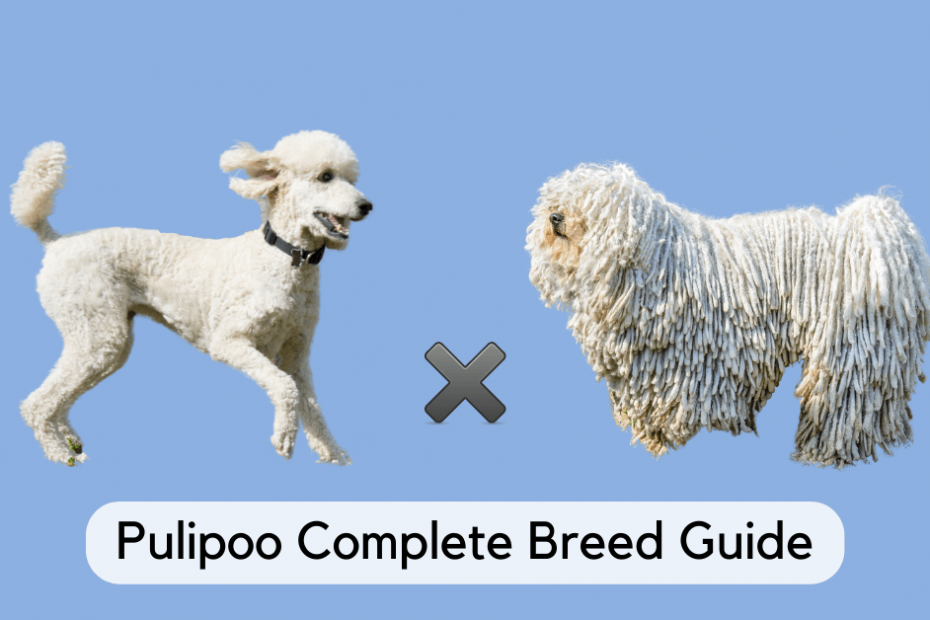Introduction
There are many new Poodle mixes, or Doodle breeds, that seem to pop up throughout the world each day. One of these new mixes is the Puli Poodle mix, commonly referred to as the Puli-Poo or Pulipoo.
The Puli Poodle mix is one of the rare breeds in the Doodle world. I wouldn’t be surprised if you’ve never heard of a Puli-Poo – I know I never have until I stumbled upon them online.
If you’re not familiar with the Puli Poodle mix, then this post is the perfect introduction to this athletic, intelligent, and overly adorable breed.
Parent Breed History
In the realm of Doodle breeds, there is not much-documented history since they are relatively new to the dog world. This is, even more, the case for rarer breeds such as the Puli Poodle mix. However, both parent breeds have a rich history that stretches more than a thousand years.
Puli
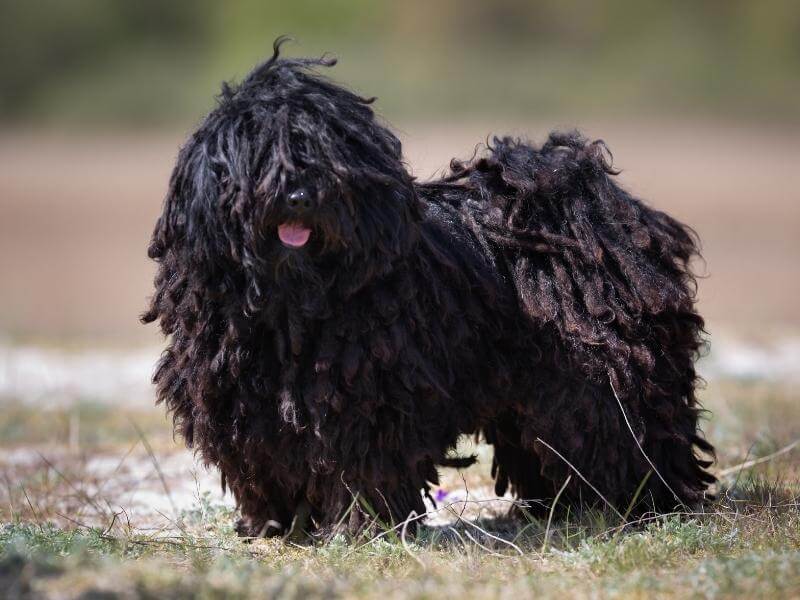
The Puli (pronounced “pooh-lee”) has a history that spans more than a millennium ago when they were first introduced to Europe by the Magyars [1]www.akc.org/dog-breeds/puli/. The Magyars (modern-day Hungarians) were tribes of nomadic peoples that stretched across Asia, which is why the dog breed is often referred to as the Hungarian Puli.
Some dog experts hold the opinion that the Puli may have its roots closer to Tibet and the Cuman people [2]www.puliclub.org/wp/history-of-the-puli/. In both clans, Magyars and Cumans, it is agreed upon that the Puli was used as a herding dog.
Herding
Pulik, which is the plural form of Puli, are iconic herding dogs. They are medium-sized but have a unique blend of power and agility which earns them the status as the “acrobat of the dog world” [3]www.akc.org/dog-breeds/puli/.
The Pulik were bred to work side-by-side with their human counterparts. They continue to play a vital role in sheepherding. As small, dark-colored sheepdogs their main role is to guard and guide the herd during daylight hours [4]www.ukcdogs.com/puli.
Responsible for protecting the flock, they have an impeccable eye for anything suspicious. This quality makes them great watchdogs both in the field and at home.
1900s
Pulik spent the majority of its history in Hungary. They eventually spread to other European countries and the United States.
The early part of the 1900s was a tough time for the breed. The tragedy of WWII in Hungary and interbreeding, pushed the breed near extinction [5]www.puliclub.org/wp/history-of-the-puli/, [6]www.akc.org/dog-breeds/puli/.
Puli dogs made their first appearance in the United States in the 1930s [7]www.akc.org/dog-breeds/puli/. It has since become a standard breed recognized by kennel clubs around the world, along with it’s own dedicated group: the Puli Club of America.
Modern Times
Today, the Puli breed is well-established. It ranks as the 164th most popular dog breed in America [8]www.akc.org/expert-advice/dog-breeds/most-popular-dog-breeds-of-2021/.
Learn even more about the Puli dog breed with this fun and informational video below:
Poodle
The Poodle dog breed originated in Germany in the 1600s. It was bred as a hunting companion specifically for waterfowl. The word “Poodle” stems from the German word referring to a puddle (or water).

The Poodle is often mistaken for being French. Although France adopted the Poodle as their national dog, it is not originally from there. Poodles did however make their way into the homes of French nobles due to their excellent traits and cuteness.
Poodles are very athletic and intelligent dogs, which made them perfect to bring along on the hunt. A portion of Poodles went on to be circus dogs since they are easy to train and stylish. Eventually, they were brought into homes and have proven to be great family dogs.
Over time, standard Poodles were bred down in size to create the Miniature Poodle and eventually the Toy Poodle.
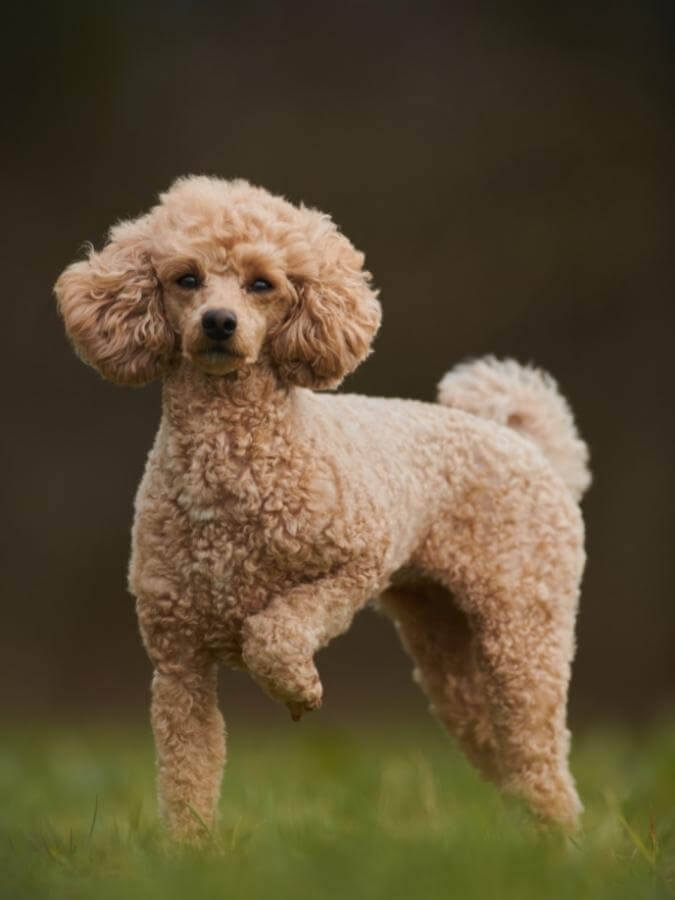
Modern Popularity
The Poodle has stolen hearts across the world for hundreds of years. It has consistently been one of the most popular dog breeds in the world. Today, it ranks as the fifth most popular dog breed in America [9]www.akc.org/expert-advice/dog-breeds/most-popular-dog-breeds-of-2021/.
Pulipoo Origin
Both the Puli and the Poodle have a distinct history and origin story. On the other hand, the Puli-Poo does not have an official origin on record.
Appearance
The Puli Poodle mix has a large variety of possible combinations for both coat type and color.
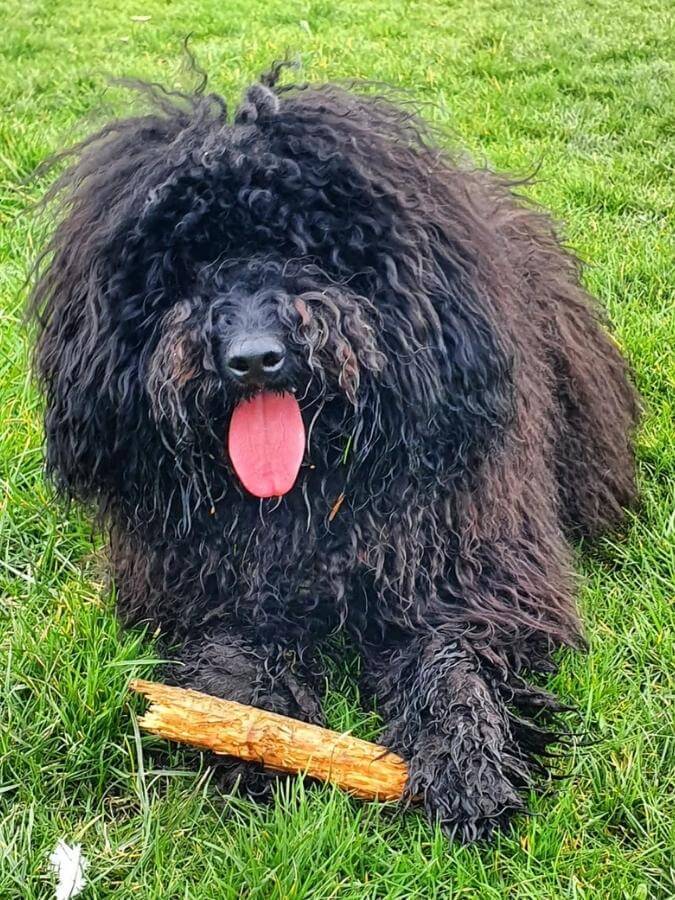
Coat
The Puli is one of only a few breeds that has a long, corded coat. The unique braids, or dreads, are hard to miss and hard to forget. It gives the Puli an iconic look and the nickname “Mop Dog”.
The Poodle has a long, curly coat. The combination of curly and corded genes gives the Puli-Poo the possibility of having a coat that is curly, corded, or wavy.
The Puli Poodle mix coat will most likely be long due to both parents’ coat length.
Coloring
A Puli Poodle mix has the potential to be many colors. It can be one solid color or a mix of colors. The variety in color possibility is due to the parent breeds.
The following is a list of possible colors that a Pulipoo may be, based on both parent breeds [10]www.akc.org/dog-breeds/poodle-standard/, [11]www.akc.org/dog-breeds/puli/:
- Apricot
- Black
- Blue
- Brindle
- Brown
- Café au Lait
- Chocolate Brown
- Cream
- Gray
- Red
- Rust
- Silver
- Silver Beige
- Tan
- White
The coloring will rely heavily on the color of the parent’s coats. A Puli-Poo may have a coat that is one solid color or have a coat that is made up of many colors (e.g. tricolor). The coat may also have markings or highlights throughout.
Traits, Characteristics, and Personality
The Puli Poodle mix inherits a host of great traits from both parent breeds. Poodles are smart, loyal, and athletic. Pulik are loyal, hard-working, and affectionate to their family.
All of the Puli-Poo’s traits are listed in the visual summary below. These traits are calculated based on the average between the two parent breeds as determined by the American Kennel Club.

Health
As a mixed breed, the Puli-Poo benefits from a lower risk of inheriting the diseases, or health issues, that are common amongst their parents. However, this does not mean they aren’t at risk.
Issues
Below is a list of common health issues and genetic diseases to be aware of in the Puli Poodle mix:
- Hip dysplasia
- Epilepsy
- Sebaceous Adenitis
- Gastric dilatation (bloat)
It is best to keep your dog’s health status current with a trusted veterinarian at all stages of their life.
A reputable breeder will prescreen both parents before breeding to ensure they are free from inheritable diseases. Some of these tests include hip evaluation, patellar luxation, and degenerative myelopathy [12]www.puliclub.org/wp/the-puli/frequently-asked-questions/.
It is important you find a good breeder to give your Puli Poodle puppy a disease-free and healthy start to life.
Diet Requirements
The Puli Poodle mix is an active breed. It is important to feed them nutritious, vet-approved dog food consistently. It is best to consult a veterinarian for your specific dog’s diet. It may change depending on their lifestyle and stage of life.
Treats can be used for training so long as they are low in calories and consist of quality ingredients.
Average Lifespan
A Puli Poodle mix dog has an expected lifespan of 10-18 years.
General Care
A routine that includes exercise, frequent grooming, and a nutritious diet is necessary to keep your Puli Poodle dog in tip-top shape.
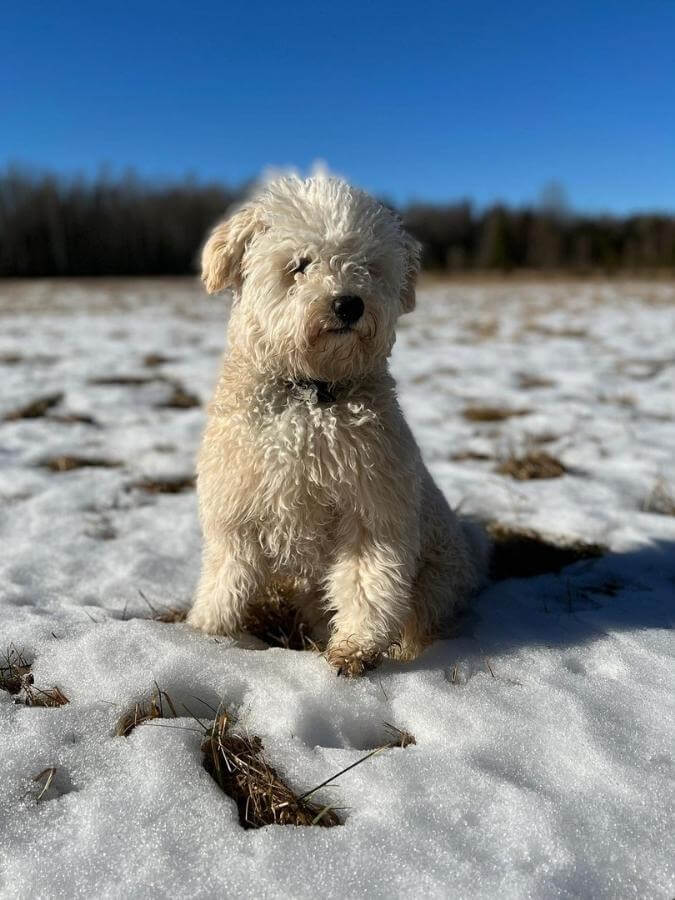
Exercise
The Puli Poodle mix is an active dog breed. Both parent breeds were working dogs either herding sheep or retrieving birds in the field.
Frequent daily walks and dedicated play time, either indoor or outdoor, will help keep your Pulipoo happy. An outdoor hike, swim, or a visit to the dog park are great activities as well.
Descendants of working dogs often have a strong need for mental stimulation. Puli-Poo’s are reluctant to sit idle and will start getting into trouble around the house if they aren’t adequately stimulated.
There are a lot of great toys and dog puzzles that can help keep your Puli-Poos mind occupied. Training is another recommended option to pursue to keep your dog’s mind sharp.
Training
The Puli Poodle mix is one of the most trainable Doodle breeds. As shown in the infographic above, they are a perfect 10/10 on the trainability scale.
This is good news for you as the owner because your dog will be primed to please you and follow your commands. Of course, this doesn’t happen naturally. It requires time and a focused effort with a training strategy centered on positive reinforcement.
Grooming
Daily brushing is recommended to keep your Puli-Poo’s coat free of tangles, mats, and debris. As your puppy grows into adulthood and you notice its coat is starting to separate like a Puli coat, then you will need to begin to cord it.
Bathing, nail trimming, and professional grooming should be performed regularly. Luckily, both parent breeds are low to non-shedding which makes them perfect for those that are seeking a hypoallergenic breed.
Conclusion
This article provided an overview of the Puli Poodle mix, including their appearance, traits, and care needs. In my opinion, Puli Poodle mixes are one of the best dogs that you can get. They are loyal, affectionate, and intelligent.
I have reason to believe the Puli Poodle mix (or Puli-Poo) will continue to rise in popularity, and it’s easy to see why. They are friendly and playful dogs who love to be around people. As medium-sized dogs, they are a great fit for almost any household or family size.
Related Posts
- Curious about Doodles? Learn everything there is to know about Doodle breeds.

References

